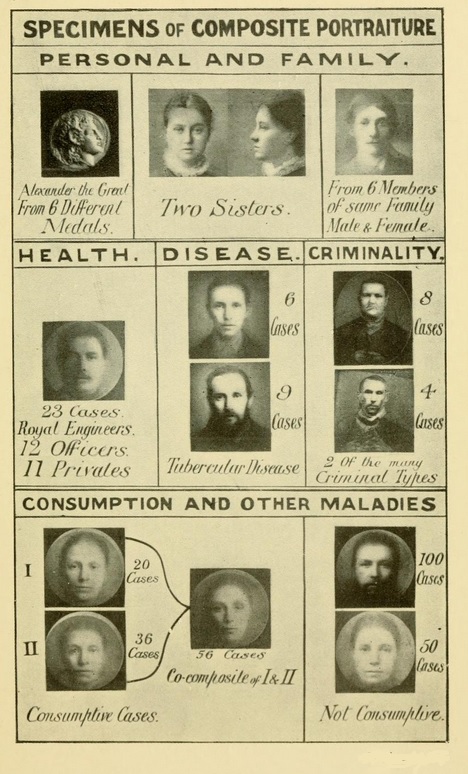
The illustration above is a plate from Sir Francis Galton's Inquiries into Human Faculty and Its Development, a landmark work in the history of psychology. The technique which the plate illustrates, "composite photography", seems more appropriate to the modern age of computer graphics and data mining, but it was extremely popular in the late Nineteenth Century. By following Galton's protocols, one could produce -- what? The revealed face of a social group? Or merely an average in which all individuality is suppressed?
Apply the method to scientists. Is the hirsute Caucasian visage staring back from the composite the face of wisdom, or the face of the crowd?
COMPOSITE PORTRAITS OF MEMBERS OF
THE NATIONAL ACADEMY OF SCIENCES
by Raphael Pumpelly
[Science 5, 378 (1885 May 8)]
Pumpelly's words are in bold.
Those of the members who were present at the Washington meeting of the Academy last spring will remember that, at the request of Prof. Brewer and myself, they sat for their separate photographed portraits for the purpose of obtaining an experimental composite picture. Prof Baird kindly offered the facilities of the photographic department ; and the pictures taken by Mr. Smilie, the photographer in charge, bear the same stamp of excellence that characterises so generally the work of that department of the National Museum.
As only one or two previous attempts, I believe, have been made to produce composites in this country, I will state briefly what they are, and how they are made.
The idea in its broadest sense was conceived and applied by Francis Galton for the purpose of obtaining an average or type portrait --- i.e. a picture that should show the features that are common to a group of individuals, and exclude those that are purely individual. It is clear that, in proportion as this result is attainable, the method will be of value in obtaining a clear conception of the external characteristics of any given type or class.
Galton reminds us that, during the first days of a traveller's meeting with a very different race, he finds it impossible to distinguish one from another, without making a special effort to do so : to him the whole race looks alike, excepting distinctions of age and sex. The reason of this is that, by short contacts with many individuals, he receives upon his retina, and has recorded upon his memory, a composite picture emphasizing only what is common to the race, and omitting the individualities. This also explains the common fact that resemblances among members of a family are more patent to strangers than to the relatives.
The individuals entering into these composites were all photographed in the same position. Two points were marked on the ground glass of the camera ; and the instrument was moved at each sitting to make the eyes of the sitter exactly coincident with these points. The composites were made by my assistant, Mr. B. T. Putnam, who introduced the negatives successively into an apparatus carefully constructed by himself, and essentially like that designed by Mr. Galton, where they were photographed by transmitted light. The arrangements of the conditions of light, &c., were such that an aggregate exposure of sixty-two seconds would be sufficient to take a good picture. What was wanted, however, was not an impression of one portrait on the plate, but of all the thirty-one ; and to do this required that the aggregate exposure of all the thirty-one should be sixty-two seconds, or only two seconds for each. Now, an exposure of two seconds is, under the adopted conditions, too short to produce a perceptible effect. It results from this, that only those features or lines that are common to all are perfectly given, and that what is common to a small number is only faintly given, while individualities are imperceptible. The greater the physical resemblances among the individuals, the better will be the composites. A composite of a family or of near relatives, where there is an underlying sameness of features, gives a very sharp and individual-looking picture.
It would be difficult to find thirty-one intelligent men more diverse among themselves as regards facial likeness than the academicians entering into this composite. They are a group selected as a type of the higher American intelligence in the field of abstract science, all but one or two being of American birth, and nearly all being of American ancestry for several generations. The faces give to me an idea of perfect equilibrium, of marked intelligence, and, what must be inseparable from the latter in a scientific investigator, of imaginativeness. The expression of absolute repose is doubtless due to the complete neutrality of the portraits.
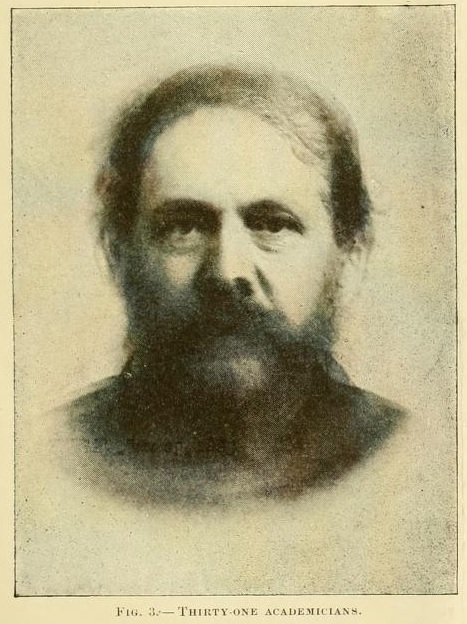
Fig. 3 contains eighteen naturalists and thirteen mathematicians, whose average age is about 52 years.
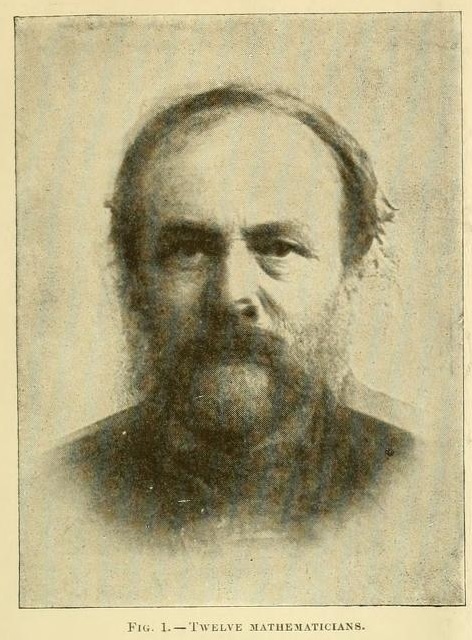
Fig. 1 contains twelve mathematicians, including both astronomers and physicists, whose average age is about 51 years.
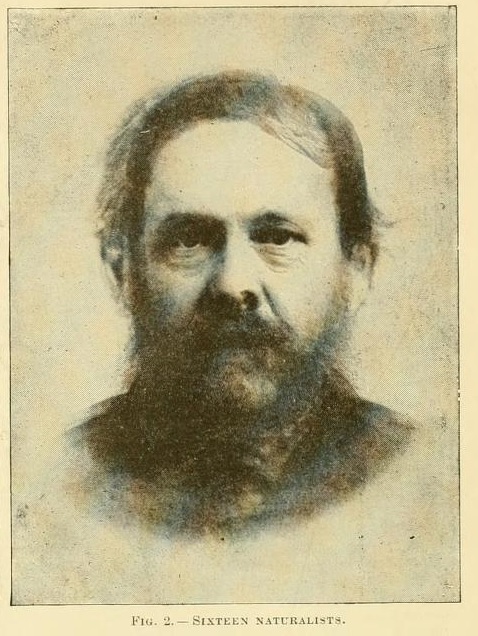
Fig. 2 is a composite of sixteen naturalists, including seven biologists, three chemists, and six geologists, with an average age of about 52 years.
I may mention, as perhaps only a remarkable coincidence, that the positives of the mathematicians, and also of the thirty-one academicians, suggested to me at once forcibly the face of a member of the Academy who belongs to a family of mathematicians, but who happened not to be among the sitters for the composite. In the prints this resemblance is less strong, but in these it was observed quite independently by many members of the Academy. So, also, in the positive of the naturalists, the face suggested, also quite independently to myself and many others, was that of a very eminent naturalist, deceased several years before the sitting for this composite.
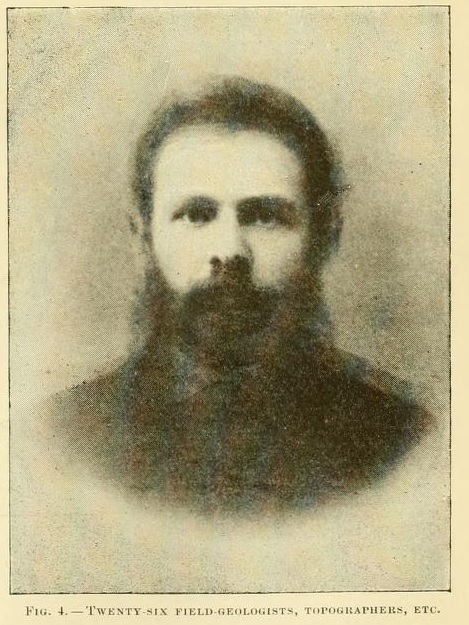
There is given also a composite (Fig. 4) of a differently selected group. It is of twenty-six members of the Corps of the Northern Transcontinental Survey -- an organisation of which I had charge, and the object of which was an economic survey of the North-Western Territories. It was a corps of men carefully selected as thoroughly trained in their respective departments of applied geology, topography, and chemistry, and having the physique and energy, as well as intelligence, needed to execute such a task in face of many obstacles. The average age of this group was 30 years.
--- Raphael Pumpelly
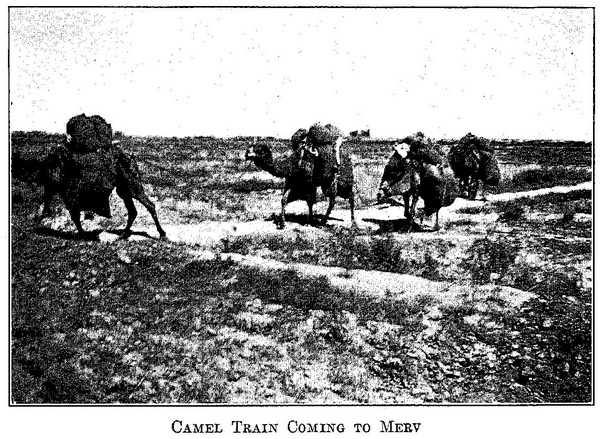
Who was Raphael Pumpelly? Indiana Jones, more or less. Mining engineer -- globe-trotting geologist for hire -- pioneer of Hokkaido, Japan's "Wild North" -- Harvard professor -- archæologist in Turkestan -- explorer of the Gobi Desert -- Big Science official in America's exploding post-(Civil) War bureaucracy. Descendant of the Connecticut elite ("of American ancestry for several generations" here meaning, according to his Reminiscences, "one Colonial Governor, eight members of the Upper House, three Patentees under the charter of Charles II, and three Commissioners of the Federated Colonies of New England"). Author of several extremely colourful (indeed, Hollywood-ready!) memoirs: an abridged version of his autobiography was even issued in 1920 as a "boy's own" thriller under the title Travels and Adventures:
"I walked out into the brilliant sunlight. Houses built of sun-dried mud bordered a vista that opened upon a vast, yellow-brown, desert plain; and, beyond, a mighty barren range of wonderfully sculptured mountains rose with a lofty majesty that cast its glamour over the whole scene. I had no remembrance of having eaten for a week. So when I saw some men hurrying to a house where a man with a revolver stood ringing a bell, I turned to enter. The man stopped me. 'Fifty cents first!' he said, holding out a hand. There were jerked beef, and beans, and some things they called bread and coffee. You ate what was pushed to you ; the memory of that pistol acted as a persuasion."
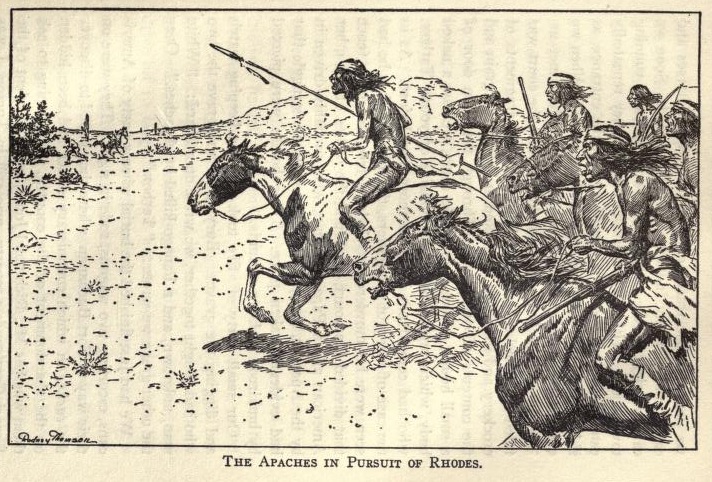
Roaming his country's western frontier, Pumpelly was shocked by the de facto genocide being waged privately against the Indians, and, in his characteristically exciting book Across America and Asia, called for Federal intervention, military if need be, to halt it:
"It is said that the Indians are treacherous and cruel, scalping and torturing their prisoners ; it may be answered that there is no treachery and no cruelty left unemployed by the whites. Poisoning with strychnine, the willful dissemination of small-pox, and the possession of bridles, braided from the hair of scalped victims and decorated with teeth knocked from the jaws of living women --- these are heroic facts among many of our frontiersmen.
"In the territory under the control of the Hudson's Bay Company --- the interests of that organization requiring a proper treatment of the Indians --- very little trouble has ever been experienced during a long intercourse with the natives ; and the same may, I believe, be said of the relations between the Mormons and the surrounding tribes. Throughout Spanish America the Jesuits succeeded to a high degree in their endeavor to elevate the condition of the conquered race, and the limit to their success was always determined by the cupidity of the home government, and of the mining population. Without difficulty these zealous apostles founded missions, and traversed parts of the Rocky Mountains which are now accessible to only a strong military force.
"Leaving our own continent, we find in Russia, China, and many other lands, a successfully pursued policy, resulting in a greater or less elevation of conquered races. The nomad Tartar tribes, brought under Russian rule, in Russia and Siberia, have been transformed, even where not christianized, into a different mode of life, forming a highly respected class, following the same occupations equally successfully with the Russians, among whom they live.
"I can explain the different condition of our relations with the Indians, only by supposing that, in the presence of long-continued dishonesty in our Indian agencies, public opinion has shaped itself into conformity with the interests of the frontiersman, who is restrained by no higher law than his own grossly selfish aim. Perhaps the question has already passed beyond the control of the Government ; certainly, at present, it is being worked out under more general laws --- those which control animal life; it has become a struggle for existence, a contest in which the nobler moral faculties have no part."
Like so many of the well-intended projects undertaken in the Reconstruction era, the alternative Indian policy advocated by Pumpelly and other Federal scientists -- the reservation system -- quickly went awry, hijacked by the same "grossly selfish" interests who had earlier pushed for direct extermination. The technique of composite photography, too, had an increasingly unpleasant history, associated as it was with Sir Francis Galton, "Darwin's mathematician" (one of the few) and his programme of eugenics and racial purity.
Pumpelly was one of those unconsciously tragic figures so common on the edges of the Western world in the late 1800s: an opponent of imperialism who was nevertheless its not-unwitting agent. Here we glimpse him studying the great iron-formation on Menominee land in the Upper Peninsula of Michigan: "I had been there before, and they knew me, and when I appeared there now they exclaimed: 'Bid-wey-wey-Gizjek!' When I asked them what they were saying, one of my Indians said that was the name they had given me. It means 'Sounding Sky' ... I was the 'rumbling of the coming storm'."
The storm! Indeed. "The faces give to me an idea of perfect equilibrium, of marked intelligence, and, what must be inseparable from the latter in a scientific investigator, of imaginativeness. The expression of absolute repose is doubtless due to the complete neutrality of the portraits." But behind those serene, neutral faces was the storm, and within the crowd the specific persons whose choices, some for good and some for evil, in knowledge or in ignorance, shaped their century and ours.
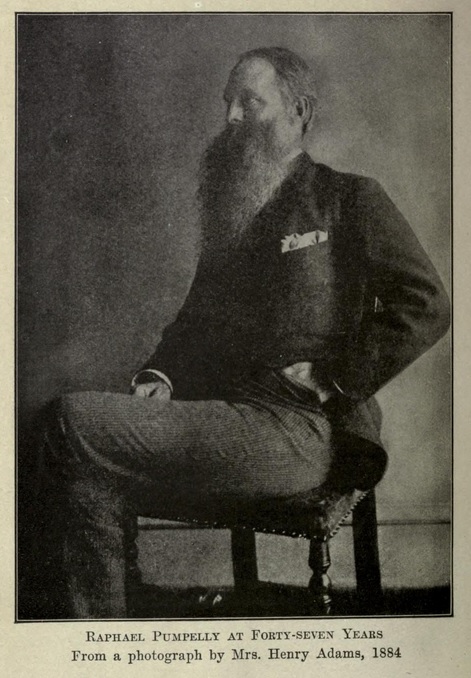
Raphael Pumpelly -- typical scientist?